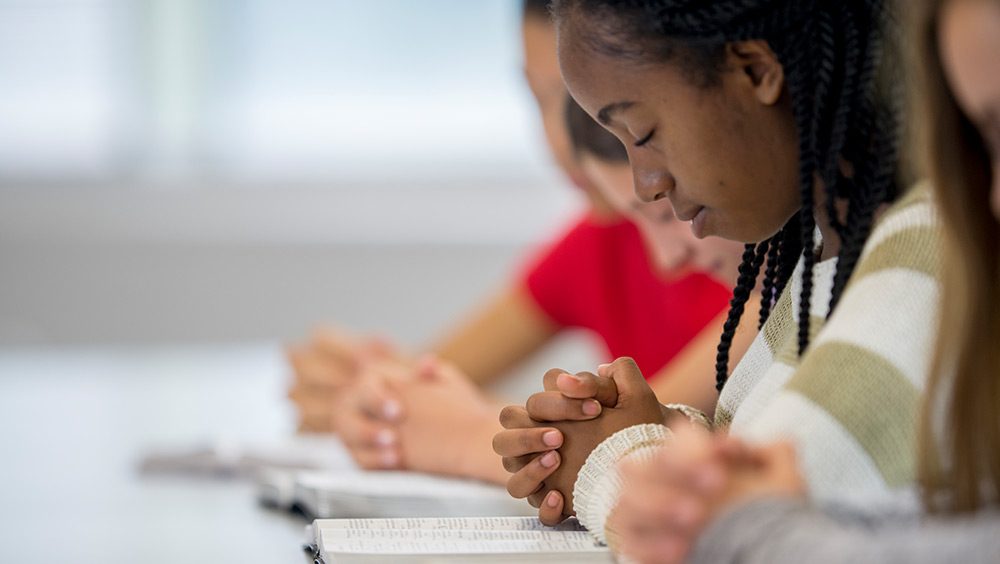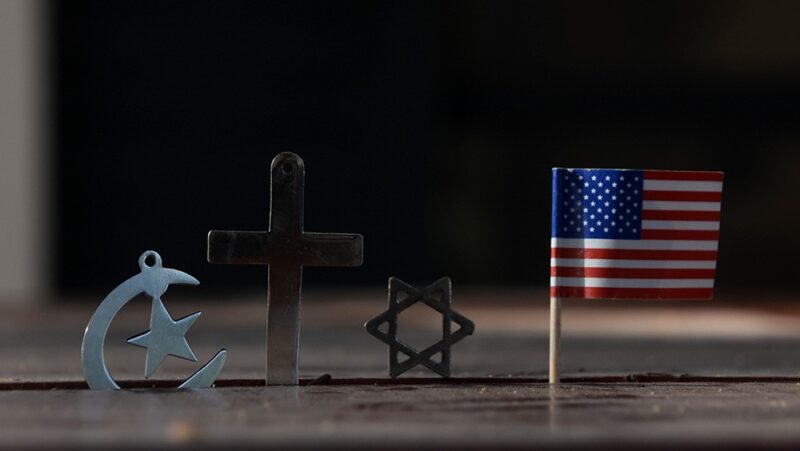Prayer in School: What’s Protected by the First Amendment?

Prayer in school can be a controversial topic in American life largely due to confusion and misinformation. Despite the uncertainty many feel when it comes to prayer in schools, the issue does not need to be complex. The First Amendment’s religious freedom protections outline clear guidelines for prayer in school.
In this post, see what is (and isn't) allowed when it comes to prayer in school for both students and teachers. Landmark Supreme Court cases and the First Amendment protect all Americans interested in praying or not praying in public schools.
Prayer in school: When and where can students pray?
Public school students have always had the right to pray, in groups or individually, as long as it is not disruptive and does not interfere with the rights of other students.
For example, students can pray around the school’s flagpole, during a moment of silence or to honor the Muslim tradition of midday prayers. They can form prayer clubs (if other extracurricular clubs are permitted) and pray quietly before taking a test.
Students can do all these things because they keep their First Amendment right to freely practice their religion when they enter public schools. The Supreme Court famously ruled in Tinker v. Des Moines Independent Community School District (1969) that students and teachers do not "shed their constitutional rights to freedom of speech or expression" just because they enter a school building.
To pray or not to pray: Download our prayer in school infographic
Public schools can only stop students from praying if the student’s prayer disrupts class or a school activity or otherwise interferes with the rights of other students.
Editor's note: These guidelines only apply to public schools and their equivalents, such as charter schools. Private schools are not bound by the First Amendment and therefore can restrict or promote student and teacher expression to a greater extent.
Prayer in school: When and where can teachers pray?
Public school employees have fewer First Amendment protections than students but can still pray if that prayer is private, and they do not pressure students to participate.
Teachers, administrators, counselors and other public school employees represent the government when they are at work. At work, they are bound by the First Amendment’s establishment clause. This prevents the government from favoring one religious tradition over another or favoring religion over non-religion.
Related: What is separation of church and state?
For much of American history, public school teachers led students in prayer or Bible readings. In the 1960s, two important Supreme Court cases, Engel v. Vitale (1962) and Abington School District v. Schempp (1963), ruled that these practices violated the establishment clause by promoting religion in the classroom. Even when teachers are sponsors or monitors for religious clubs or coaches in after-school sports, they must refrain from praying with or in front of students.
Educators do keep some rights to exercise their religion. They can pray as long as it does not violate the establishment clause. That means the prayer cannot involve students or happen when public school employees are performing the duties of their job. The Supreme Court confirmed this limit in Kennedy v. Bremerton School District (2022). It ruled that coach Joseph Kennedy’s post-game prayers on the football field did not happen "within the scope" of his responsibilities as a coach, and that he did not coerce students to join him. School employees are welcome to form prayer groups that meet before, after or even during school if they meet away from students.
Joseph Kennedy, the high school football coach who was fired for leading players in prayer, returned to the sidelines tonight.
— Citizen Free Press (@CitizenFreePres) September 2, 2023
Bremerton High won the game and then Kennedy kneeled on the field in silent prayer.
Loud cheers from the crowd. pic.twitter.com/VnLXkZl1P9
Critically, any person – such as a school employee or guest speaker – that a school puts in front of a captive audience of students is also bound by the First Amendment. This includes other students. So, an educator cannot ask a student to pray over the intercom during morning announcements or at a graduation ceremony.
Some school employees may feel such restrictions limit their own religious expression too much. But encouraging prayer, even indirectly, violates the First Amendment’s requirement that the government be neutral toward religion and not encourage or discourage it.
Equally as important, school-sponsored prayer can also endanger the free exercise rights of students. If a student feels pressured to participate in the religious exercise of a tradition that’s not their own, they (or their parents) may feel that hurts their own tradition. Schools should never make students choose between their deeply held beliefs and an education. As a representative of the government, the role of an educator is not to enforce their own personal beliefs but to guard the freedoms of their students.
The bottom line on prayer in school and the First Amendment
Public schools are not religion-free zones — quite the opposite. Diversity of religious expression is a way for students to engage with others who are different. Student prayer, as long as it is respectful of other students’ rights, allows students to bring their whole selves to the classroom. But school-sponsored prayer, which is prohibited by the First Amendment, overlooks that diversity and violates students' right to practice a faith or not without government interference.
David Callaway is the former religious freedom specialist for the Freedom Forum.
What Is Separation of Church and State?
What Is Libel? A First Amendment Analysis
Related Content

